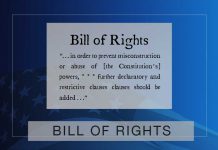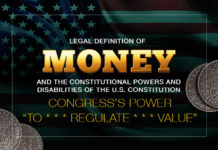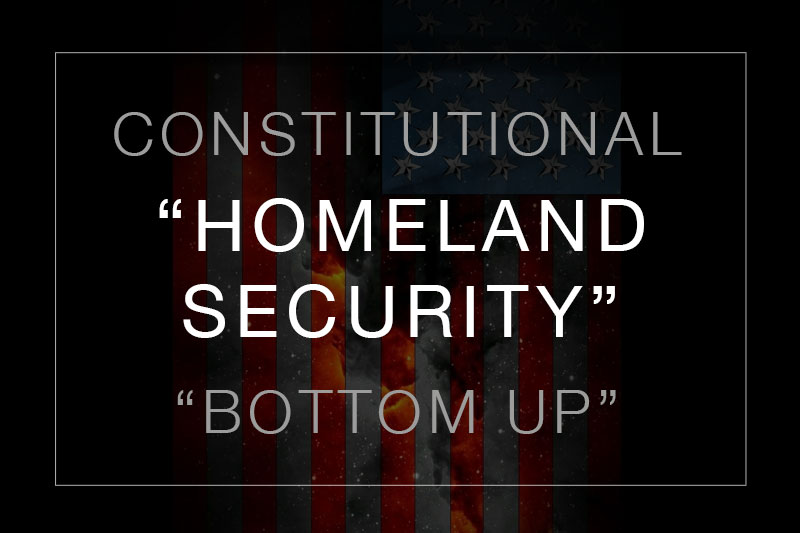Last Updated on February 19, 2023 by Constitutional Militia
Militia: Separate and Distinct from the Regular Armed Forces of the Union or States
For good reason, the Constitution makes sharp distinctions among “the Militia of the several States”,[1] “the Army and Navy of the United States”[2]variously denoted as “Armies”,[3] “a Navy”,[4] and “the land and naval Forces” [5]and the “Troops, or Ships of War” that the States may not “keep * * * in time of Peace” “without the Consent of Congress”.[6] Americans can disregard or blur these distinctions only at their peril.
Militia: Not Parts of the Regular Armed Forces of the Union or of the States.
Explaining why “the right of the people to keep and bear Arms, shall not be infringed”, the Second Amendment took care to emphasize that “[a] well regulated Militia[ is] necessary to the security of a free State”.[7] That this is the only instance in the original Constitution and the Bill of Rights, other than in the Preamble, in which WE THE PEOPLE expressly set forth the purpose of a constitutional right, power, privilege, immunity, or disability proves how supremely important they considered—and wanted everyone else, down through the ensuing ages, to be aware of—the inextricable historical, legal, and operational relationship among “[a] well regulated Militia”, “the security of a free State”, and “the right of the people to keep and bear Arms”, as Americans understood all of those concepts when they ratified the Bill of Rights in 1791, and had understood them for generations before that.[8] Moreover, when the Second Amendment referred to “a free State” it attested to THE PEOPLE’S belief that any and every “free State” always, without exception, needs “[a] well regulated Militia” to provide true “security”. That belief long preëxisted the original Constitution, as well as the Second Amendment. For the actual “Militia of the several States” which THE PEOPLE came to incorporate as integral and permanent parts of the Constitution’s federal structure were not institutions newly invented for that purpose in 1788 or 1791. Rather, they were the very “well regulated Militia” in which THE PEOPLE and their forebears had personally participated for more than a century theretofore. The belief had prompted the action; and the action had confirmed the belief. Thus, the necessity of the Militia in America’s constitutional system is not the product of the Constitution itself or of THE PEOPLE’S desire to experiment in a novel manner in matters of “homeland security”, but instead a fundamental principle of American political philosophy, applied and proven in practice in the crucible of extensive historical experience, which subtends and supports the Constitution—upon which the Constitution depends—and without which the Constitution would be, not simply defective, but actually incapable of performing its purpose. Indeed, the Militia enjoy an extra- constitutional status, because they do not depend upon the Constitution for their definition—rather, the Constitution cannot be properly construed without importing that definition from the Militia’s pre-constitutional legal history. And the Militia enjoy even a supra-constitutional status, because (having been governmental institutions long before anyone even imagined the Constitution) they do not depend upon the Constitution for their legitimacy—rather, the legitimacy of the Constitution depended in the first instance upon the success of the Declaration of Independence, to which the Militia contributed in no small measure. For, at the minimum, “the militia played a very important role in the War of American Independence. Its political functions probably were indispensable, and as a military institution, supported by state troops, it continued to meet its traditional colonial responsibilities for local defense and for providing a general emergency reserve.”[9] Even today, the Constitution continues to depend upon the Militia, because the Constitution is the supreme law of the Union; the Union is composed of the several States; each of the States must be “a free State”; and “[a] well regulated Militia” is “necessary to the security of a free State”, and therefore to the security of all of the States, of the Union, and of the Union’s supreme law.[10]
“[T]he Militia of the several States” are foundational and permanent establishments of and within the Constitution’s federal system, whereas the existence of any “Armies”, “Navy”, and “Troops, or Ships of War” is entirely contingent upon circumstances and the actions of Congress and the States in response thereto. Even if the various “Armies”, “Navy”, and “Troops, or Ships of War” that the Constitution mentions never came into existence, the Militia would always subsist as a matter of law.[11]
No State needs “the Consent of Congress” to maintain her own Militia. To the contrary: For public officials in any State to neglect or refuse to maintain “[a] well regulated Militia”—particularly if Congress fails, neglects, or refuses “[t]o provide for organizing, arming, and disciplining, the Militia”[12]—constitutes the most serious possible violation of their “Oath[s] or Affirmation[s], to support th[e] Constitution”,[13] because it endangers “the security of a free State”,[14] upon which all constitutional rights, powers, privileges, and immunities depend.
Contrary to the widespread misconception that the contemporary statutory National Guard is the continuation of, or (even more implausibly) the successor to, the constitutional “Militia of the several States”,[15] the National Guard is actually an adjunct or reserve component of the regular Armed Forces, and in one aspect arguably part of the “Troops” that the States may “keep * * * in time of Peace” “with[ ] the Consent of Congress”—and therefore is constitutionally disqualified from being any part of “the Militia of the several States” at all.[16] More importantly, for numerous constitutional reasons, “the Militia of the several States” are not, and can never be, any part of the National Guard or any other component of the regular Armed Forces.[17]





























